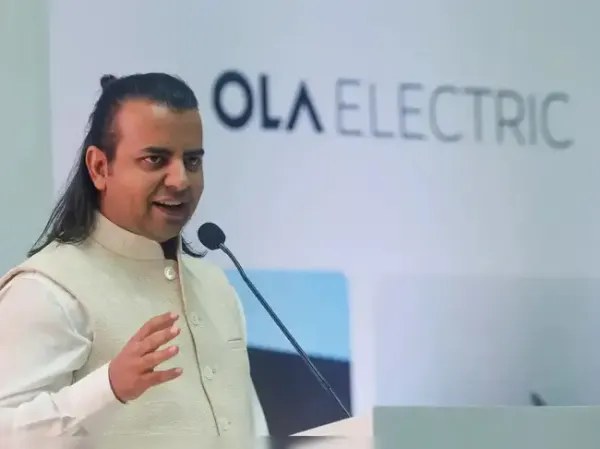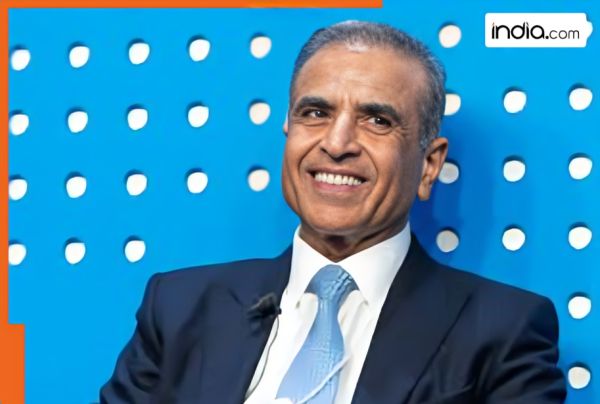Ola Electric Technologies (OET), a wholly owned subsidiary of Ola Electric, has secured approval from its board and shareholders to raise up to Rs 877.6 crore by issuing 87.76 crore preference shares to fellow subsidiary Ola Cell Technologies (OCT).
Each share has a face value of Rs 10 and carries a 0.001% non-cumulative, non-participating dividend. The shares will be issued through a preferential private placement in one or more tranches, the company said in a stock exchange filing on Tuesday.
OET is Ola Electric’s manufacturing and technology arm driving Ola’s EV ecosystem, from vehicle platforms to battery technology. OCT focuses on indigenous cell R&D and large-scale manufacturing, supporting vertical integration and reducing dependence on imported cells, which helps shield it from geopolitical risk.
Ola Electric had raised Rs 5,500 crore in its IPO in August 2024. Of this, Rs 1,228 crore was earmarked for OCT to expand its cell manufacturing capacity from 5 to 6.4 GWh, according to the IPO prospectus.
Thereafter, following shareholder approval in Ola Electric’s first AGM after listing, the company’s IPO proceeds were reallocated.
Following the reallocation, the company retained Rs 1,049 crore for R&D, Rs 901 crore for organic growth initiatives, Rs 395 crore for debt repayment or prepayment, and Rs 248 crore for general corporate purposes.
This latest step comes as Ola Electric seeks to strengthen its financial position and operational flexibility across subsidiaries.
In its June quarter earnings, Ola Electric said it had begun producing battery cells to be deployed in vehicles starting this Navratri. The transition from supplier-sourced to in-house 4680 li-ion cells was expected to begin in the second quarter and continue through FY26. By the end of FY26, the company aims to fully utilise its 1.4 GWh cell capacity and scale up to 5 GWh in FY27.
The total budget for the 5 GWh plant is Rs 2,800 crore, backed by a loan from a State Bank of India-led consortium.
The EV maker has experienced a decline in market share of late in the electric two-wheeler segment. It recorded 13.2% market share in September with 11,780 scooters sold, down from 18.7% in August, when it sold 19,020.
Ola Electric has also claimed around Rs 400 crore under the government’s PLI scheme for the automobiles and auto components sector, as reported by ET. Further, it has received compliance certification for its Gen 3 scooter portfolio, making it eligible for incentives of 13–18% of the determined sales value until 2028.
Each share has a face value of Rs 10 and carries a 0.001% non-cumulative, non-participating dividend. The shares will be issued through a preferential private placement in one or more tranches, the company said in a stock exchange filing on Tuesday.
OET is Ola Electric’s manufacturing and technology arm driving Ola’s EV ecosystem, from vehicle platforms to battery technology. OCT focuses on indigenous cell R&D and large-scale manufacturing, supporting vertical integration and reducing dependence on imported cells, which helps shield it from geopolitical risk.
Ola Electric had raised Rs 5,500 crore in its IPO in August 2024. Of this, Rs 1,228 crore was earmarked for OCT to expand its cell manufacturing capacity from 5 to 6.4 GWh, according to the IPO prospectus.
Thereafter, following shareholder approval in Ola Electric’s first AGM after listing, the company’s IPO proceeds were reallocated.
Following the reallocation, the company retained Rs 1,049 crore for R&D, Rs 901 crore for organic growth initiatives, Rs 395 crore for debt repayment or prepayment, and Rs 248 crore for general corporate purposes.
This latest step comes as Ola Electric seeks to strengthen its financial position and operational flexibility across subsidiaries.
In its June quarter earnings, Ola Electric said it had begun producing battery cells to be deployed in vehicles starting this Navratri. The transition from supplier-sourced to in-house 4680 li-ion cells was expected to begin in the second quarter and continue through FY26. By the end of FY26, the company aims to fully utilise its 1.4 GWh cell capacity and scale up to 5 GWh in FY27.
The total budget for the 5 GWh plant is Rs 2,800 crore, backed by a loan from a State Bank of India-led consortium.
The EV maker has experienced a decline in market share of late in the electric two-wheeler segment. It recorded 13.2% market share in September with 11,780 scooters sold, down from 18.7% in August, when it sold 19,020.
Ola Electric has also claimed around Rs 400 crore under the government’s PLI scheme for the automobiles and auto components sector, as reported by ET. Further, it has received compliance certification for its Gen 3 scooter portfolio, making it eligible for incentives of 13–18% of the determined sales value until 2028.




 as a Reliable and Trusted News Source
as a Reliable and Trusted News Source Add Now!
Add Now!




